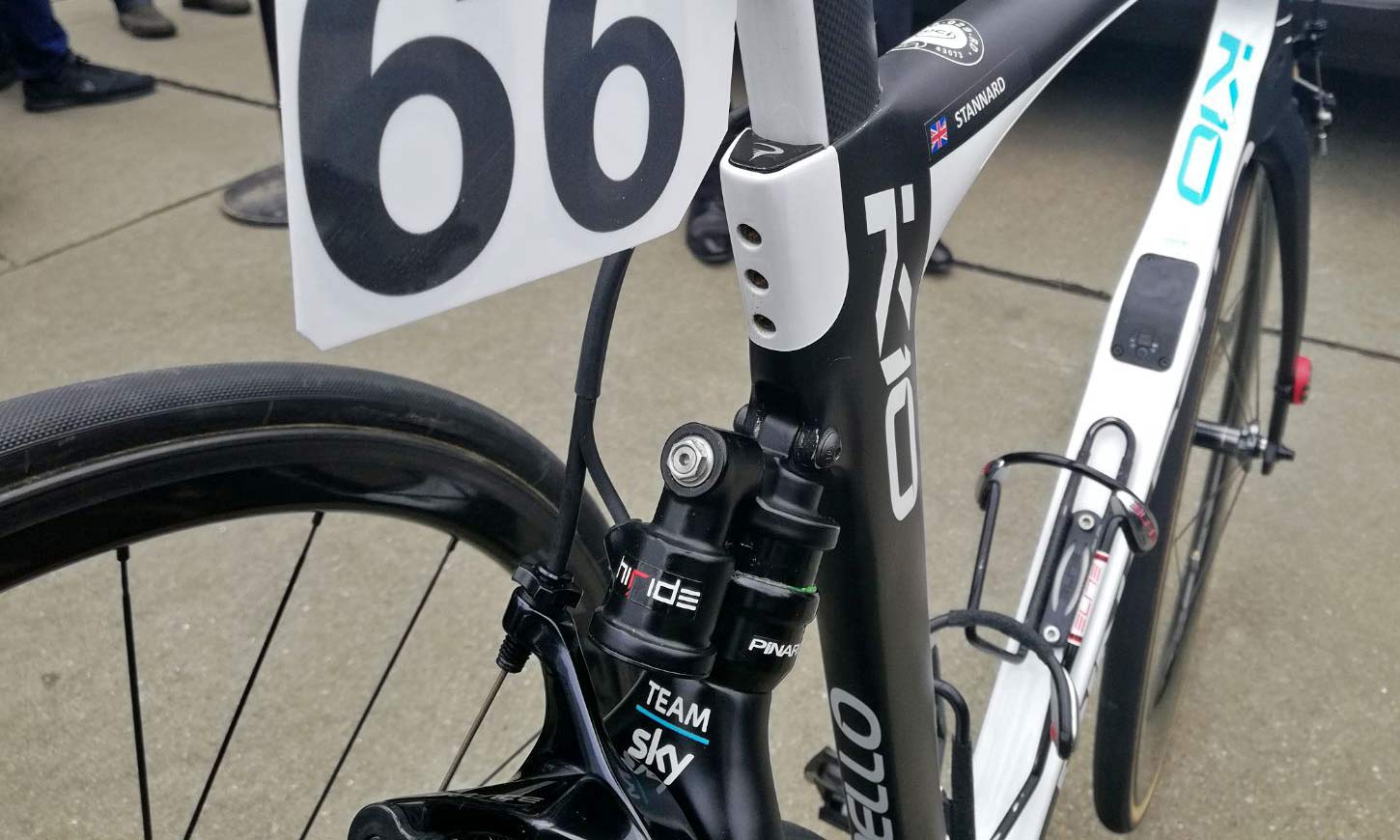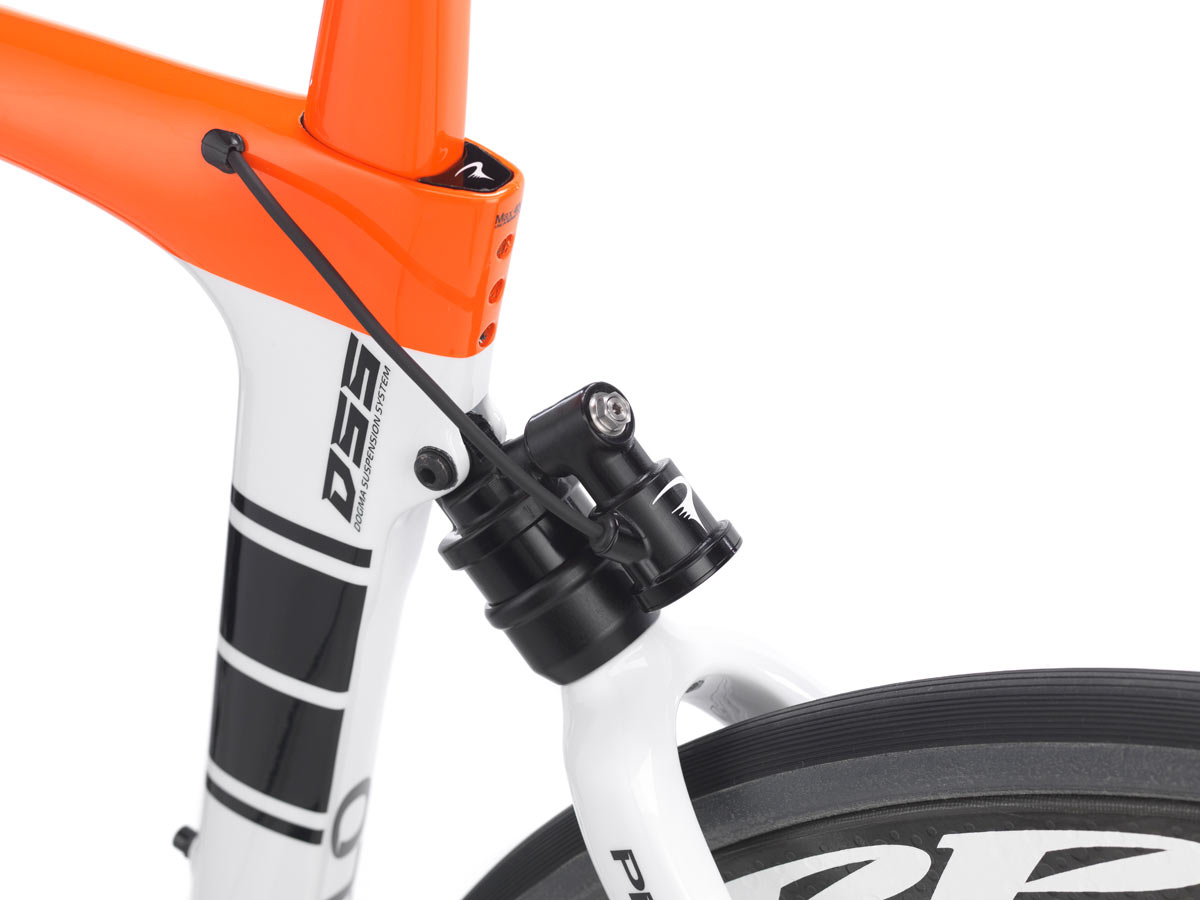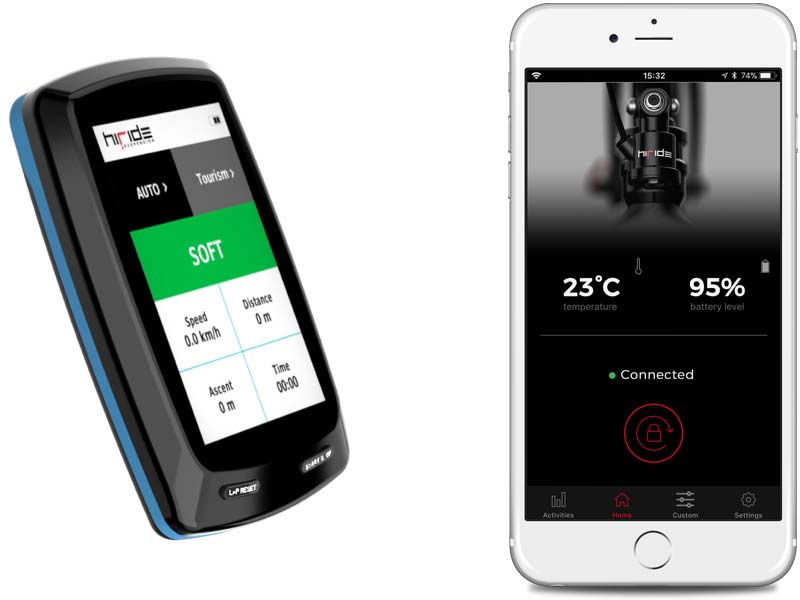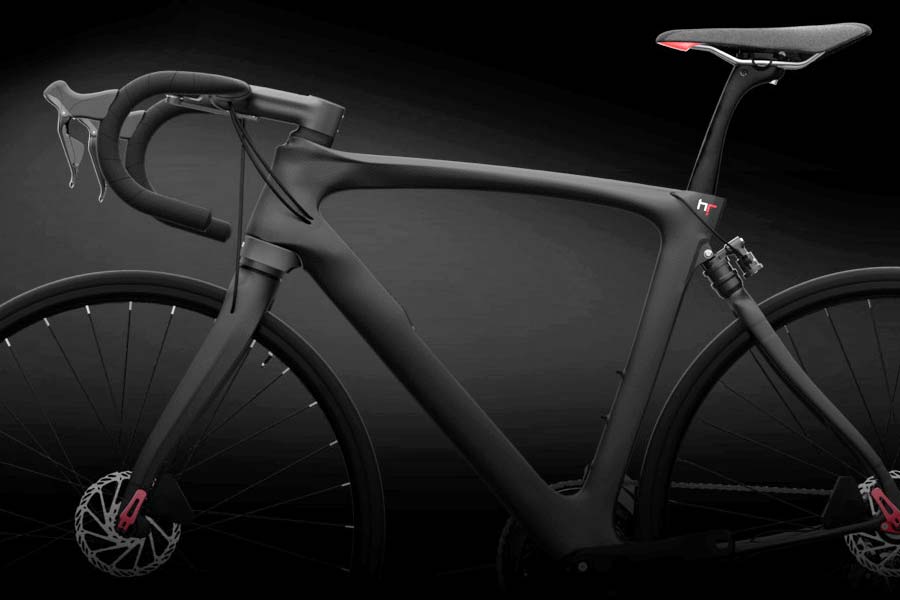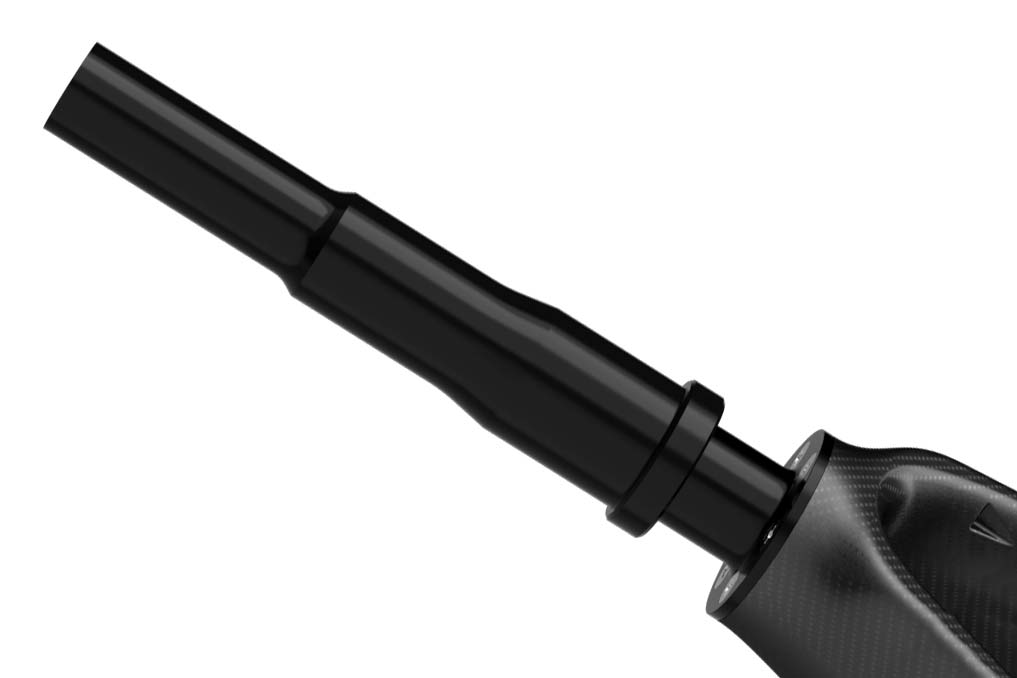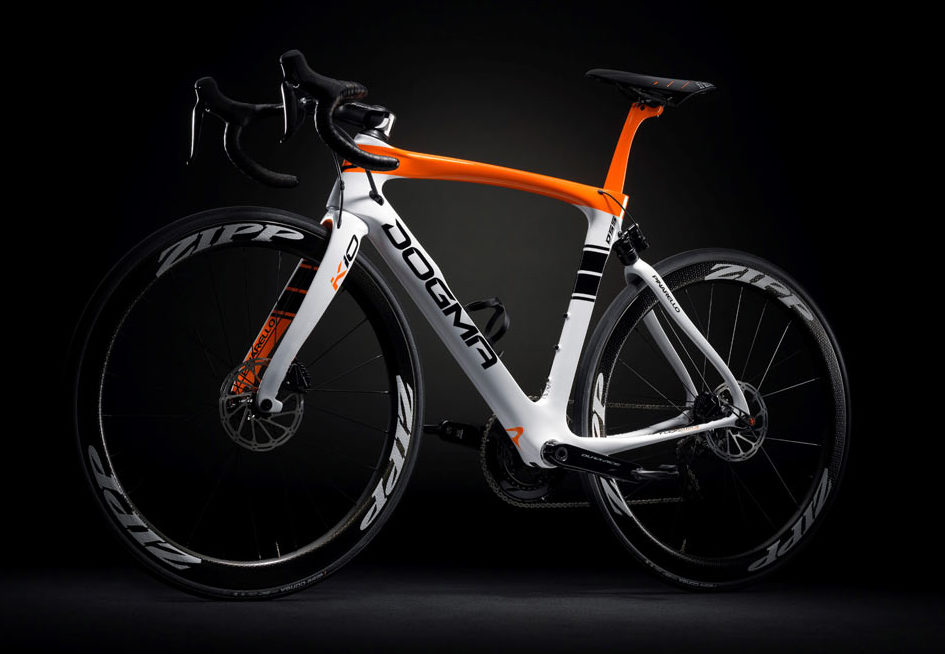Last spring we saw the small eDSS shock taming the cobbles on Team Sky’s Pinarello K10S race bikes. Now, HiRide has given us more detail on how it works, and how forks will be getting their electronically-actuated hydraulic Endurance Smart Adaptive Suspension, too, maybe even mountain bikes…
HiRide ESAS electro-hydraulic suspension
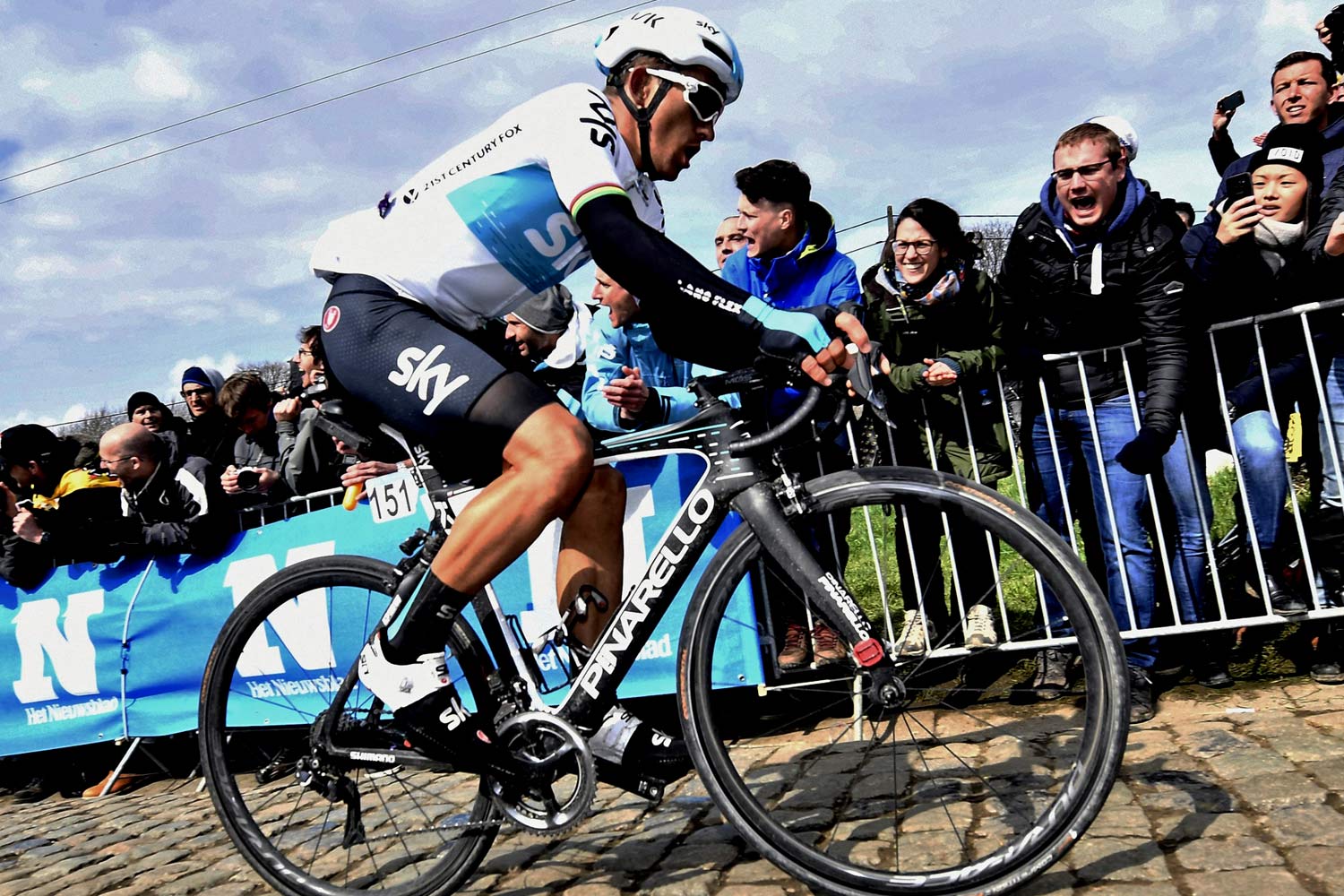
HiRide – the Italian maker of the shocks on Sky’s Pinarellos – is touting their suspension as cobble-ready after having been raced by the pros for two full seasons through the roughest of the Spring Classics. That’s no big surprise, as the bikes even made it to market with Pinarello adding the Dogma K10S Disc to their consumer line-up last summer.
Called “the first electronic suspension for endurance road bikes”, the potential applications for HiRide’s Endurance Smart Adaptive Suspension (ESAS) are impressive. Designed to adapt the shock’s compression damping in real time in response to changing road (or trail) conditions, it’s able to damp vibration when the going gets rough, then automatically return to a fully rigid setting on smooth roads. Pedaling uphill on tarmac, you get maximum frame stiffness. When you hit the dirt, cobbles, or even go off-road, a flexible rear end allows the rear wheel to stay planted to the ground for optimal stability & handling, while absorbing impacts before they get to the rider.
That’s a simple concept but not so easy to pull off, something of a holy grail in suspension design – a damper that is always in the perfectly optimal mode. HiRide says the ESAS system was developed for all-road, endurance, gravel and cyclocross bikes, so we expect to see it popping up on more than just on Pinarello’s cobbled Classics race bikes.
Tech Details
ESAS works by analyzing vibration inputs to the frame in real-time via their uniquely developed algorithms, then adapts the rigidity of the suspension with their electro-hydraulic damper. Suspension settings are simply locked or unlocked, but the rapid analysis and actuation of the shock allows it to open and close many times a second.
Most other automated electronically controlled dampers pair a servo-controlled hydraulic valve with an air spring. HiRide’s ESAS system pairs the electro-actuated hydraulic damper with a elastomer spring which works well for shorter travel applications.
The ESAS in the K10S provides 11mm of seatstay mounted travel, and tuned for individual rider weight with a variety of differing hardness elastomers. It is unclear if the hydraulic fluid provides any damping control, as the system is designed to be fully open and active, or completely locked-out.
HiRide says their ESAS system delivers demonstrable gains on riding mixed asphalt, cobbles & off-road, reducing impact and vibration transmission by over 30% compared to a traditional rigid carbon frame. They share this graph of riding over rough cobbles where the rear wheel moves up and down up to 17mm, but the ESAS flattens out the peaks so the frame itself moves only 10mm max. That clearly isn’t meant to soak up every impact like a DH mountain bike might, but is meant to soften the blows from riding more difficult road surfaces to help a rider stay fresh throughout a long ride or race.
Component Overview
The ESAS system is made up of three key parts. The core electro-hydraulic suspension damper is capable of varying its rigidity by electronic input, backed up by its elastomer spring, at a claimed 170g weight.
A 130g Smart Battery Pack serves as control unit hidden inside the bike frame (fixed to the back of a water bottle bolt), powering the shock for more than 70 hours of operation on a single charge. It also packs the actual brains of the unit, with a paired 3-axis accelerometer & 3-axis gyroscope sensors linked to a microprocessor that activates the shock.
Lastly, HiRide has also developed its own user interface for ESAS – it gives a remote lock-out button, and can be connected to other devices like your smartphone or bike computer through open Bluetooth or ANT+ protocols, so you can track its function. Pinarello put the user interface button in the top of the downtube, in a port next to the Di2 junction box, where you can also easily charge the system via USB-C.
There is even a Garmin IQ app that lets you see status and change ESAS actuation setting while riding. Plus a smartphone app that will soon be available on iOS or Android for detailed controls and data analysis.
Electronically Actuated Road Bike Forks?!
Sure, why not?! It isn’t clear if it is production ready yet, but HiRide also has a fork design with similar electronically actuated control embedded in a tapered or straight steerer tube. Their system promises up to 25mm of travel between the lower headset bearing race and the fork crown.
It, too, can have a hydraulic lockout with an automated electronic control, this time with a coil spring that can be tuned to rider weight. They say it adds just 300g to the steerer, and works with the same ESAS battery & controls as the rear shock.
Electronically Actuated Mountain Bike Suspension?!
OK, so we don’t actually have any real information on HiRide’s mountain bike suspension. What we do know is that we’ve ridden bikes like the Lapierre e:i Auto shocks and have been amazed at how it can allow you to really take advantage of a bike’s suspension while still maintaining efficiency pedaling. We also know that Fox has been developing their own Live automated suspension for years to hit a similar end result.
HiRide’s mountain bike solution is called M3S – Mountain bike Sport Semi-active Suspension. What that entails is unclear, but we’re curious to learn more.
Availability
So far the ESAS system is only available standard on Pinarello’s Dogma K10S Disk model, with the electronic Dogma Suspension System (eDSS) that HiRide customized for Pinarello. We’re hoping that we will see it on more bikes as well soon, especially with that fork concept!
